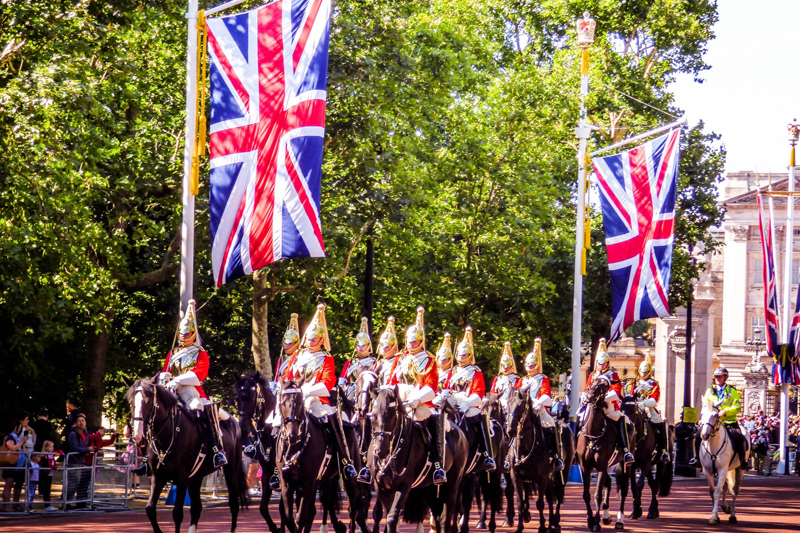The British Museum

First opened in 1759 the British Museum was, to quote the Museum’s website, ”the first national public museum in the world.” Then, as now, the museum offered free entrance to the general public. The Museum was originally set up to provide the public with access to the vast historical collection (over 71,000 objects) of the doctor Sir Hans Sloane. The physician was not only a great collector but lived a long life - from 1660-1753. Since inception the British Museum’s collection has grown, acquiring such treasures as the ancient Egyptian Rosetta Stone and the Elgin Marbles – friezes and statues which Lord Elgin brought from Greece to Great Britain in the early nineteenth century.
Every time I have visited the British Museum I have been awestruck by the imposing building, the vast Museum collections and the variety of activity taking place. The building has an energy to it, filled with visitors, hosting frequent creative performances/activities in the Great Court – a huge open space surrounding the circular Reading Room which was once open to the skies. There are regular free tours and talks in different parts of the Museum – a great way to get an introduction to a historical subject that interests you. Galleries cover many parts of the world – Africa, America, Ancient Egypt, Ancient Greece & Rome, Asia, Europe and the Middle East. There are also themed rooms covering such subjects as Clocks & Watches, the Enlightenment, Living & Dying and Money. I have found it best to only attend one or two talks/tours on a visit, as it is easy to get information and sensory overload. However, if you are on a one-off visit to the museum my suggestion would be (if you enjoy museums) to consider spending at least half a day there and plan the visit carefully to gain maximum benefit – the Museum has an excellent website with details of tours, talks, exhibitions etc.
The British Museum is housed in an imposing building on Great Russell Street in London. Nearest tube stations include Goodge Street (Northern Line), Holborn (Picadilly & Central Lines), Russell Square (Picadilly Line) and Tottenham Court Road (Northern & Central Lines). The central location makes it easy to combine a trip to the Museum with shopping in Oxford Street and Tottenham Court Road, or follow a visit to the museum with an evening meal or theatre visit in London’s West End
As with many London museums and art galleries the British Museum puts on exhibitions (usually for a few months at a time) which the public can pay to see. If you are a regular visitor to the museum and/or want to support their work you may find paying for British Museum membership worthwhile - this gives you free entry to all exhibitions and access to talks, lectures and other members’ events.
If you have never been to the British Museum and get the opportunity I urge you to go. I have talked to people who visit regularly and those who have only been once - all agree that the British Museum offers learning and memories that can last a lifetime.
Every time I have visited the British Museum I have been awestruck by the imposing building, the vast Museum collections and the variety of activity taking place. The building has an energy to it, filled with visitors, hosting frequent creative performances/activities in the Great Court – a huge open space surrounding the circular Reading Room which was once open to the skies. There are regular free tours and talks in different parts of the Museum – a great way to get an introduction to a historical subject that interests you. Galleries cover many parts of the world – Africa, America, Ancient Egypt, Ancient Greece & Rome, Asia, Europe and the Middle East. There are also themed rooms covering such subjects as Clocks & Watches, the Enlightenment, Living & Dying and Money. I have found it best to only attend one or two talks/tours on a visit, as it is easy to get information and sensory overload. However, if you are on a one-off visit to the museum my suggestion would be (if you enjoy museums) to consider spending at least half a day there and plan the visit carefully to gain maximum benefit – the Museum has an excellent website with details of tours, talks, exhibitions etc.
The British Museum is housed in an imposing building on Great Russell Street in London. Nearest tube stations include Goodge Street (Northern Line), Holborn (Picadilly & Central Lines), Russell Square (Picadilly Line) and Tottenham Court Road (Northern & Central Lines). The central location makes it easy to combine a trip to the Museum with shopping in Oxford Street and Tottenham Court Road, or follow a visit to the museum with an evening meal or theatre visit in London’s West End
As with many London museums and art galleries the British Museum puts on exhibitions (usually for a few months at a time) which the public can pay to see. If you are a regular visitor to the museum and/or want to support their work you may find paying for British Museum membership worthwhile - this gives you free entry to all exhibitions and access to talks, lectures and other members’ events.
If you have never been to the British Museum and get the opportunity I urge you to go. I have talked to people who visit regularly and those who have only been once - all agree that the British Museum offers learning and memories that can last a lifetime.
You Should Also Read:
Isambard Kingdom Brunel
Wiliam Tyndale
Murder In The Cathedral

Related Articles
Editor's Picks Articles
Top Ten Articles
Previous Features
Site Map
Content copyright © 2023 by Asha Sahni. All rights reserved.
This content was written by Asha Sahni. If you wish to use this content in any manner, you need written permission. Contact Sarah V Monaghan for details.


